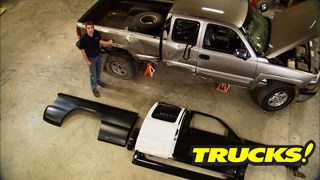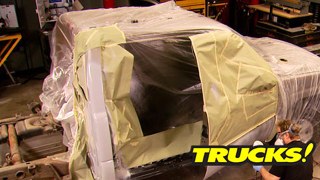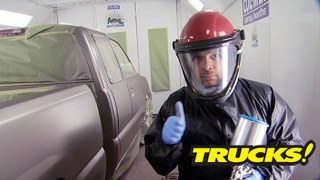Parts Used In This Episode
Certified Auto Recycling
Recycled passenger rear door.
Keystone Automotive
Bedside panel RH 6.5 ft. bed
Kimberly-Clark Professional
KLEENGUARD* V50 Contour Eye Protection with Foam Fog & Particle Shield, WYPALL* Red Shop Towels, SCOTT┬о Shop Towels.
LMC Truck
Outer rocker panel RH, door shell RH, front fender RH, cab corner RH.
Norton Automotive Refinishing Products
SpeedGrip epoxy panel bonding adhesive.








